First, design ideas
1. Use PLC to control one-dimensional motion platform to realize automatic forward/reverse running of motor and manual forward/reverse running;
2. There is a limit switch at each end of the stroke of the one-dimensional motion platform, which is defined as positive limit and negative limit, respectively;
3. The motor must be reset before the motor is automatically reversed. The process of resetting is as follows: the starting motor runs in the negative direction; after running to the negative limit position, it runs for a certain distance in the positive direction, and this position is used as the initial position of the motor's automatic forward/reverse running;
4. After the reset is completed, press the forward rotation button, the motor runs in the positive direction for a certain distance (this distance is set by the motion envelope parameter), and stops when it is in position. Press the reverse button, the motor runs to a negative distance and stops when it is in place;
5. If the forward/reverse operation is running, touch the limit switch and the motor will stop running. At this time, the motor can be controlled to move away from the limit switch by manual reversing button, or the platform can be reset by pressing the reset button;
6. After the trip switch is touched, it needs to be reset again to perform automatic forward/reverse running control;
7. During the operation of the motor, it can be stopped at any time through the "stop button" and "emergency stop button";
8, after the stop running, need to reset again to carry out automatic forward and reverse operation control;
9. The "reset indicator", "operation indicator" and "stop indicator" are used to indicate the operating status of the one-dimensional platform.
Second, the mechanical body
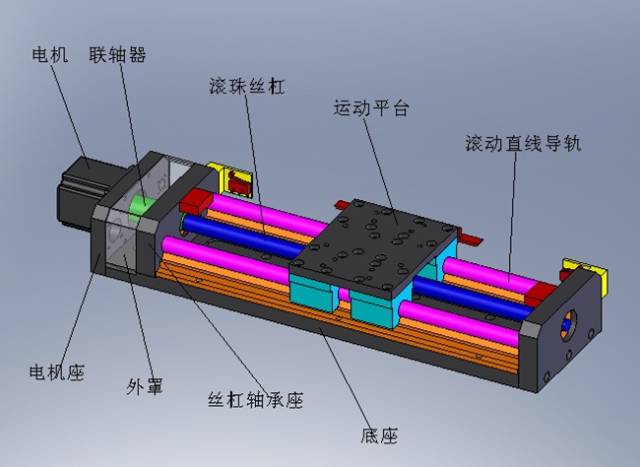
Third, the hardware circuit
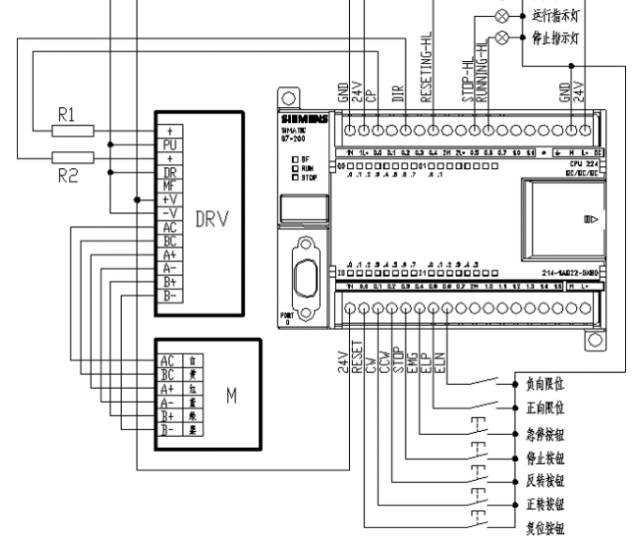
The S7-200 CPU provides two high-speed pulse output points (Q0.0 and Q0.1) that can operate in PTO (pulse train output) and PWM (pulse width modulation) states, respectively. Using PTO or PWM can realize speed and position open-loop motion control.
The PTO function can output a series of pulses, and the user can control the period (frequency) and the number of pulses. The PWM function can continuously output a series of pulses with adjustable duty cycles. The user can control the pulse period and pulse width (duty cycle).
The high-speed pulse output points and the common digital output points share the output images Q0.0 and Q0.1. When the PTO or PWM function is activated on Q0.0 and Q0.1, the PTO/PWM generator has control over the output and the output waveform is not affected by others.
Only the transistor output type CPU can support the high-speed pulse output function.
Fourth, sports envelope
Profile is a predefined curve with position as abscissa and speed as ordinate. Envelope is a graphical description of motion.
An envelope consists of multiple segments, each segment containing an acceleration and deceleration process to reach the target speed, and a specified number of pulses running at the target speed at a uniform speed. If it is a single-stage motion control or the last stage of multi-stage motion control, it should also include a deceleration process from the target speed to stop.
PTO mainly implements position control through the envelope. The position control thinks of creating an envelope by parameter setting and graphically displaying the envelope curve to automatically generate a subroutine for position control.
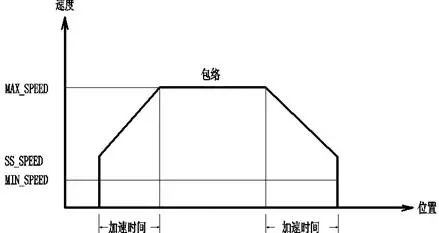
Fifth, the motion envelope setting procedure
Before starting to write the program, first set the motion envelope, the steps are as follows:
(1) Double-click "Wizard - PTO/PWM" shown on the left. The "Pulse Output Wizard" window appears.

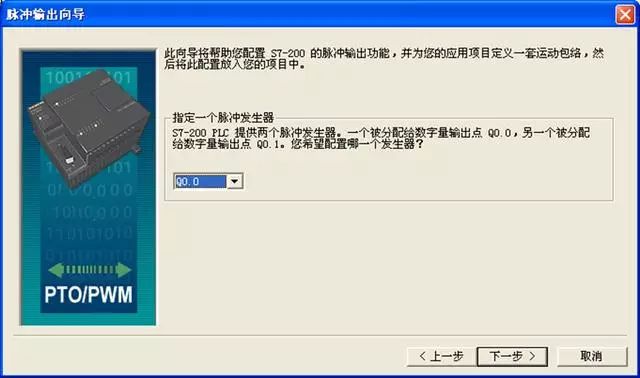
(2) Select Q0.0 and click "Next".
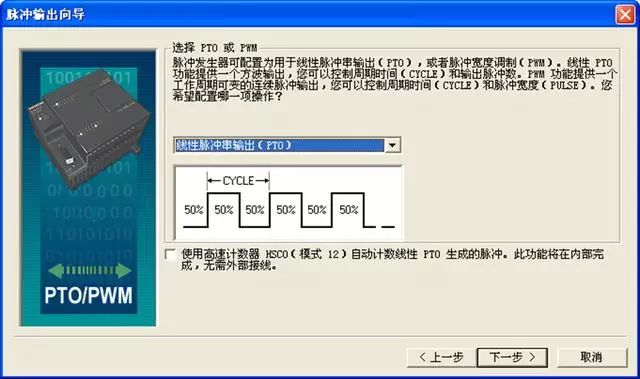
(3) Select "Linear Pulse Output (PTO)" and click "Next".
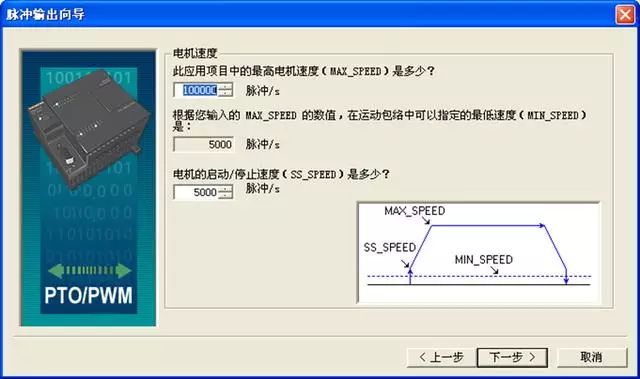
(4) Set the highest motor speed, lowest speed, and motor start/stop speed that are applied in the project.
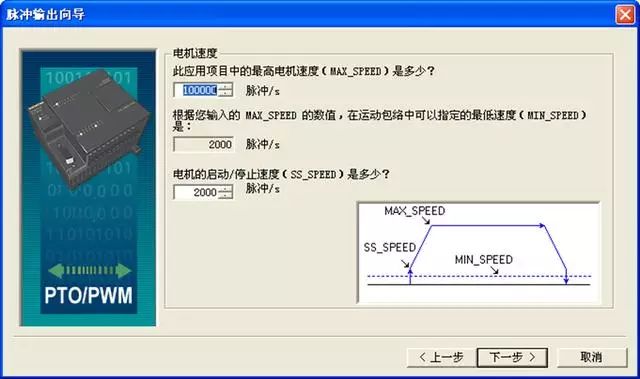
(5) Click "Next" to set the acceleration and deceleration time.
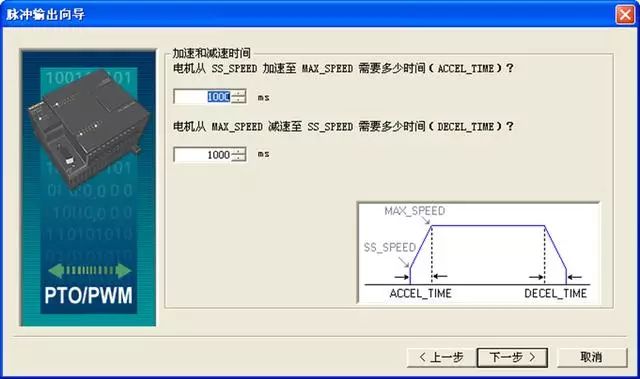
(6) Click "Next".
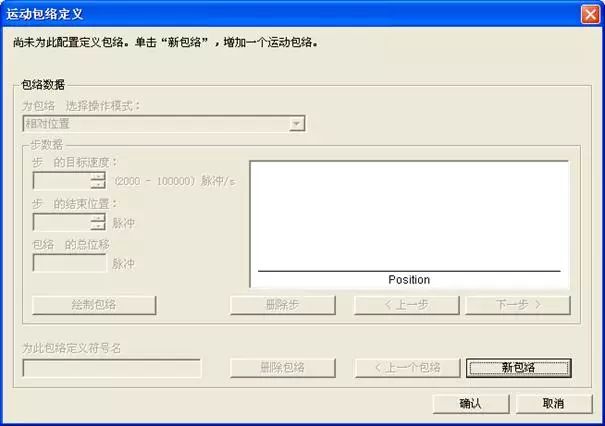
(7) Click on "New Envelope" and select "Yes".

(8) The gray part of Fig. 27 is activated. Select "Relative position" and set the parameters. Among them, the target position of step 0 should not be set too small and must be greater than the sum of the acceleration and deceleration pulses.
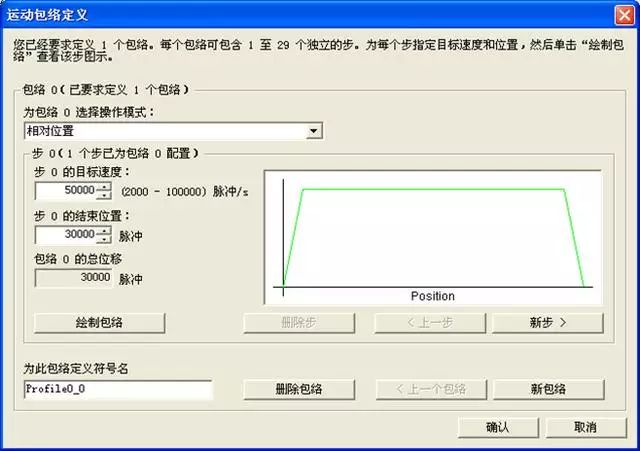
(9) Click "Confirm".
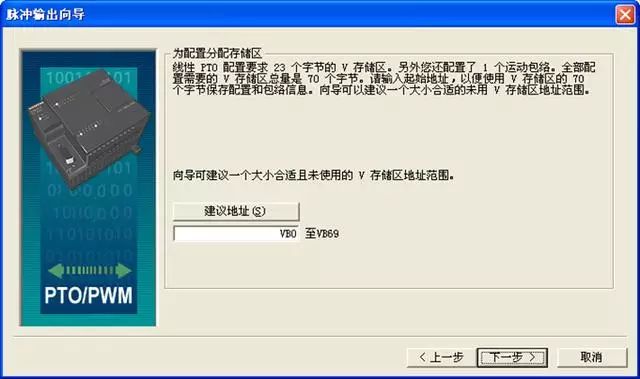
(10) Change the parameter "VB0" to "VB1000". Note that do not repeatedly define "VB1000-VB1069" in the program; click "Next".
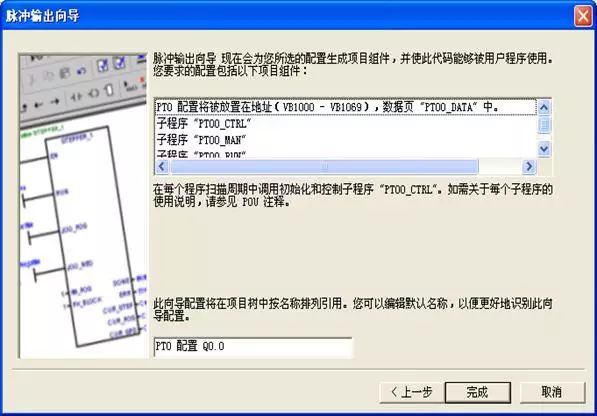
(11) Click "Finish" and select "Yes" in the dialog box that pops up.
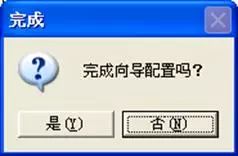
(12) The motion envelope setting is completed. The Q0.0 corresponding subroutines appear in the calling subroutine.

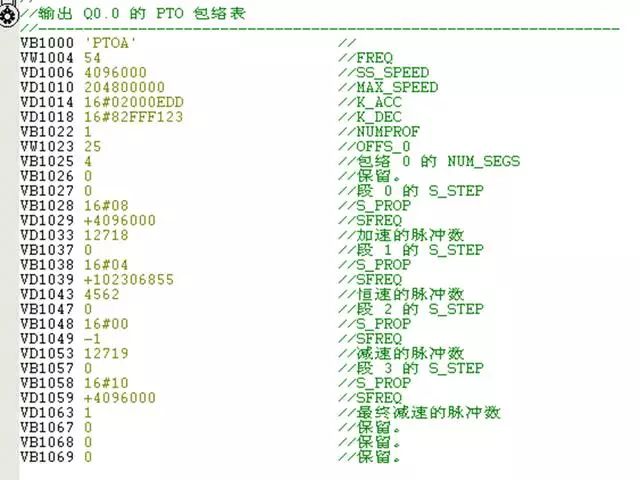
Sixth, PLC program
1, power initialization
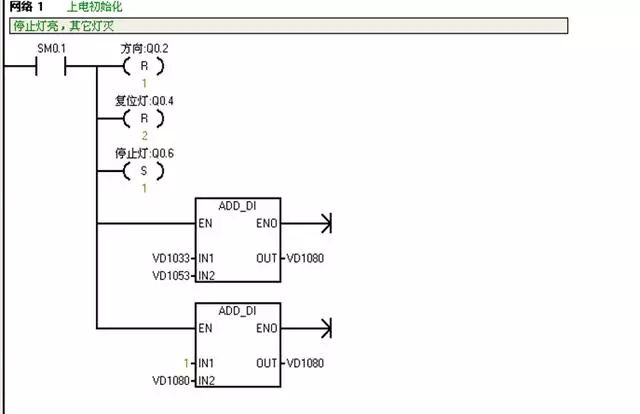
SM0.1: This bit is turned on for the first scan cycle. The purpose is to call the initialization routine.
2. Motor control subroutines and initialization
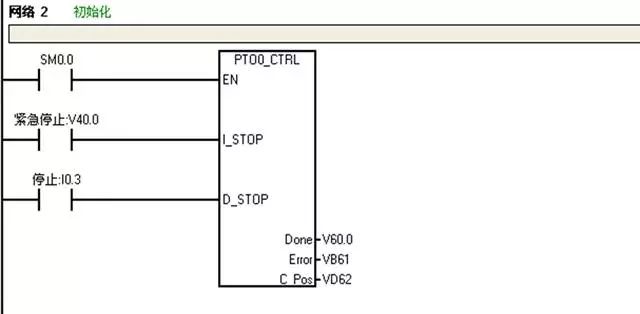
PTO0_CTRL is only used once in the program and is executed every scan, so use SM0.0 as input to EN.
EN: enable end, connect with SM0.0, keep constant pass;
I_STOP: The motor stops immediately when it is valid;
D_STOP: The motor decelerates and stops when it is valid;
Done: Finished sign. When "1" indicates that the previous instruction was completed;
Error: display error code, "0" means no error;
C_Pos: When the HSC counter function is on, it indicates the number of running pulses, otherwise it is 0.
3, reset

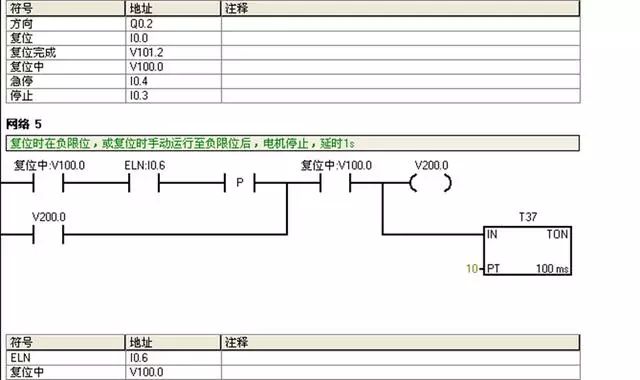
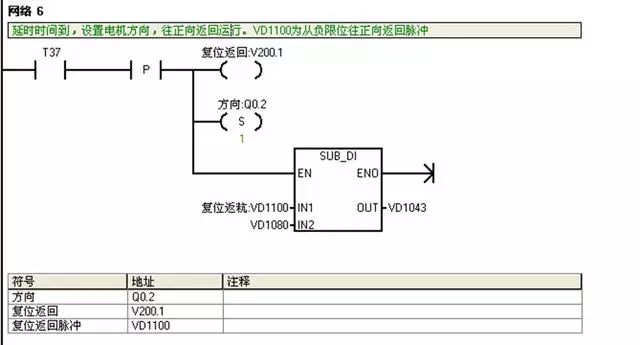
VD1100: Reset return pulse number, set in "user definition 1" of data block. According to the reduction ratio of the motor and the subdivision of the driver and the motor stroke setting.

VD1043: Run envelope constant-speed segment pulse number; VD1100-VD1080= VD1043.
4, forward
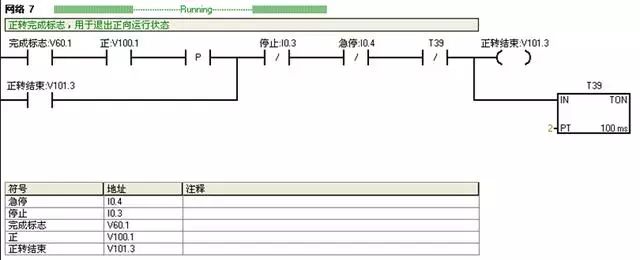
VD60.1: Motion Envelope Operation Completion Flag, "Done" parameter in PTO0_CTRL; v100.1: Forward Run State; v101.3: Forward End;
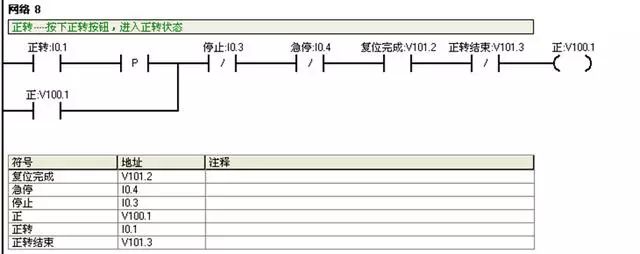
I0.1: Forward button;
V100.1: Forward running state; V101.2: Reset completed flag. Before the automatic reversing operation must be reset;
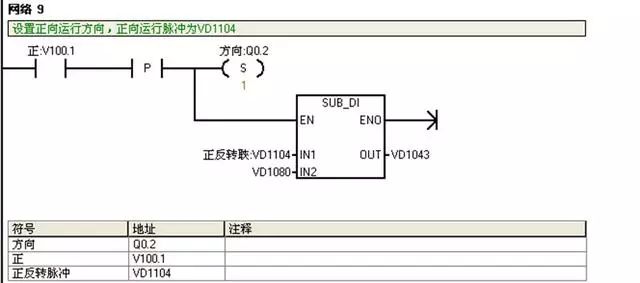
Q0.2: motor direction;
VD1104: Number of positive and negative pulses, same as VD1100 parameter, set in "User Defined 1" of "Data Block". VD1104-VD1080= VD1043.
5, reverse
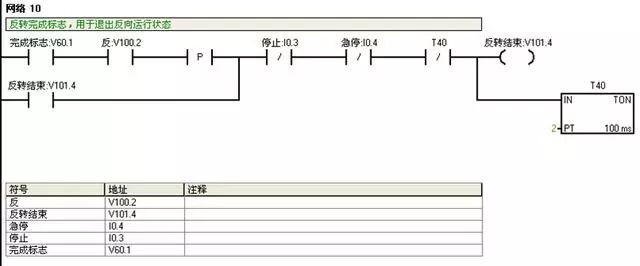
VD60.1: Motion Envelope Operation Completion Flag, "Done" parameter in PTO0_CTRL; v100.2: Reverse Run State; v101.4: Reverse End;
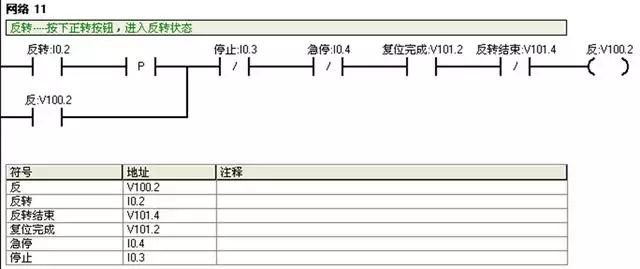
I0.2: Invert button; V100.2: Reverse running state; V101.2: Reset completed flag. Before the automatic reversing operation must be reset;

Q0.2: motor direction;
VD1104: Number of positive and negative pulses, same as VD1100 parameter, set in "user definition 1" of "data block". VD1104-VD1080= VD1043.
6, manual forward
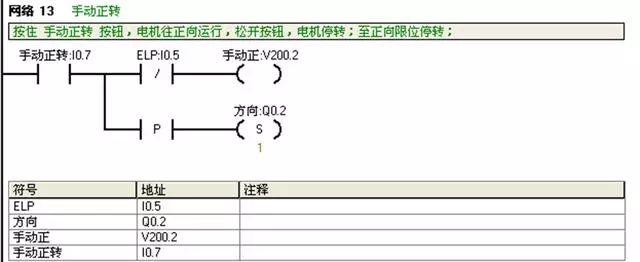
Manual forward rotation is the jog control of the motor. It is necessary to hold down the button until the motor can run. After the positive limit is reached, the button cannot be operated even if it is held down. It can only be operated in the reverse direction.
7, manually reversed
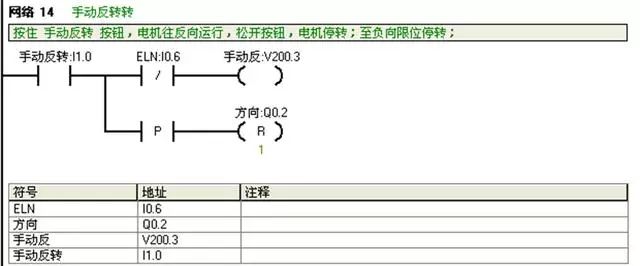
Manual reversal is the jog control of the motor. It is necessary to keep pressing the button and the motor can run. After the negative limit is reached, the button cannot be operated even if it is held down. It can only be run in the forward direction.
8, emergency stop
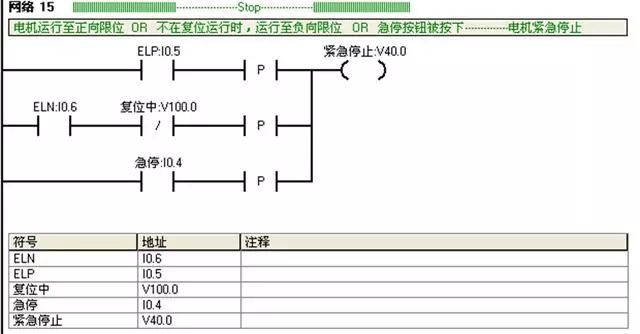
Emergency stop: The protection strategy of the system when it reaches the positive and negative limits. In any case, press the emergency stop button to stop the system.
9, the output
(1) Envelope operation
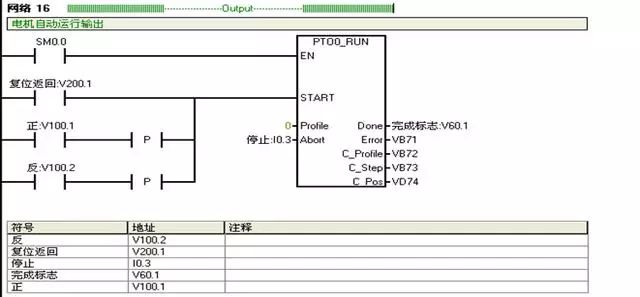
EN: enable end, use SM0.0 link to keep constant
START: When the parameter is on, execute the motion envelope. To ensure that the command is sent only once, use the rising edge signal;
Profile: the set motion envelope number;
Abort: Position module stop parameters. After starting, stop running the current envelope and decelerate to stop;
Done: Finished sign. When the module completes the subroutine, this parameter is "1";
Error: error code, "0" means no error;
C_Profile: Contains the current execution profile of the Position module;
C_Step: The outline step currently being executed;
C_Pos: If the PTO Wizard's HSC counter function is enabled, the C_Pos parameter contains the number of modules represented by the number of pulses; otherwise this value is always 0.
(2) Jogging operation
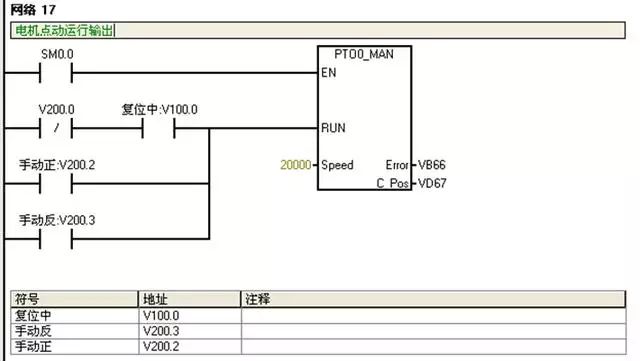
EN: Enabled, SM0.0 is always on.
RUN: Enable this parameter to accelerate to set speed operation, disable the parameter motor deceleration stop;
Speed: Set the maximum speed for manual operation;
Error: The error code of this subroutine. "0" means no error;
C_Pos: If the PTO Wizard's HSC counter function is enabled, the C_Pos parameter contains the number of modules represented by the number of pulses; otherwise this value is always zero.
(3) Indicators

In the reset state, the reset indicator lights up.
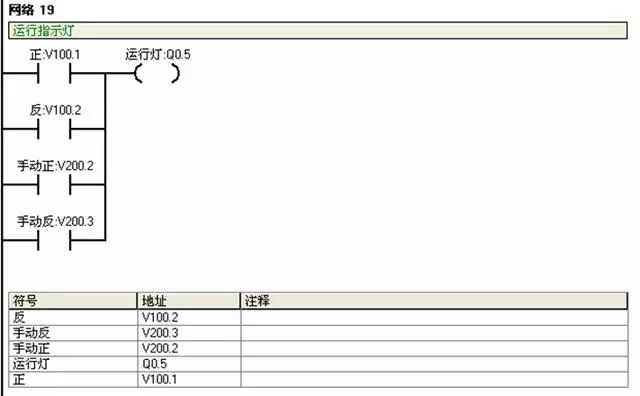
When the operation is reversed, the operation indicator is on.
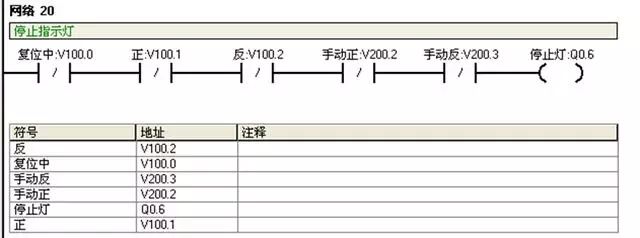
When not in reset or operating state, stop light.
Firewall Appliance,Firewall Router,Mini Pc Pfsense,Firewall Network Server
Shenzhen Innovative Cloud Computer Co., Ltd. , https://www.xcypc.com